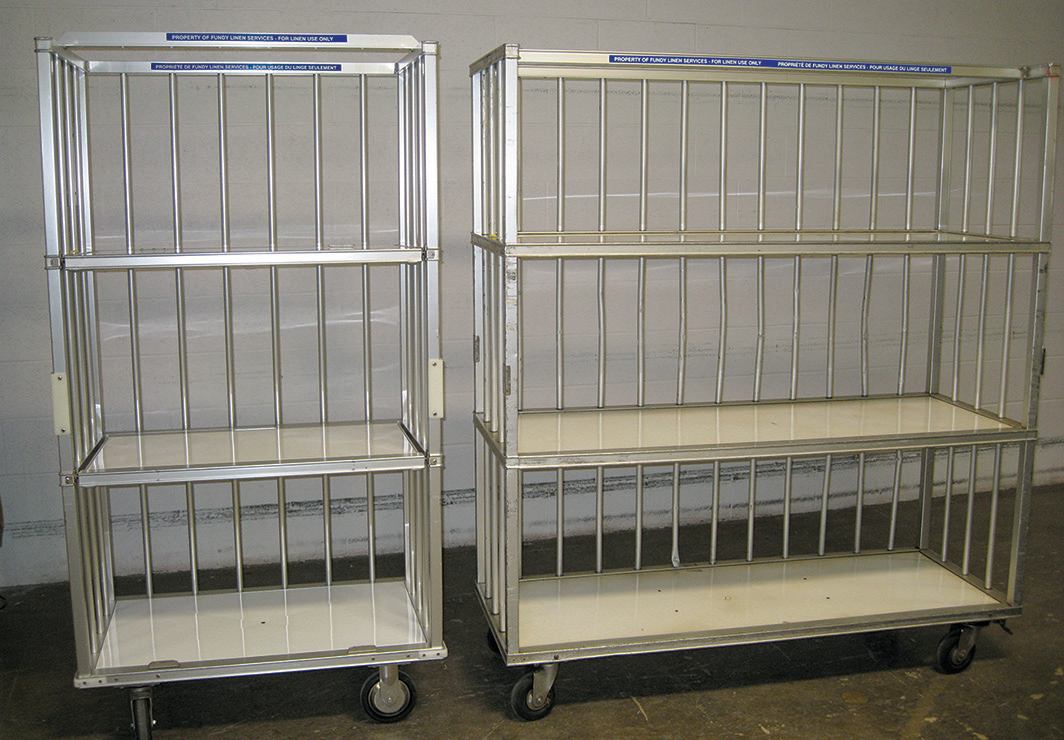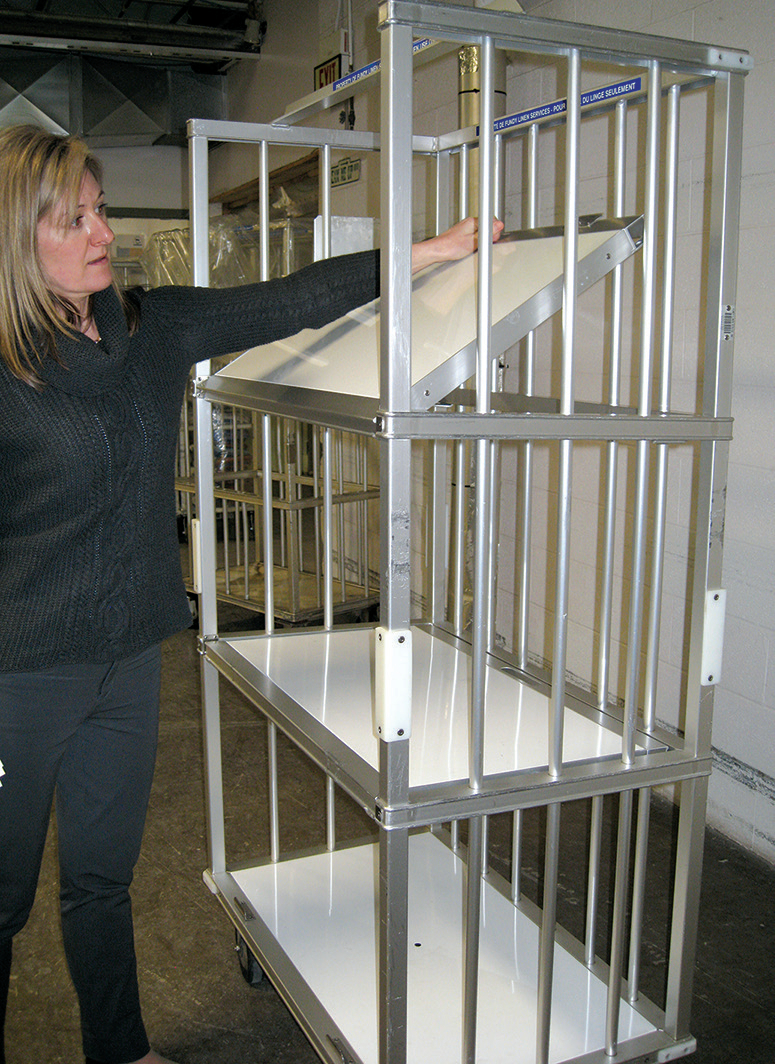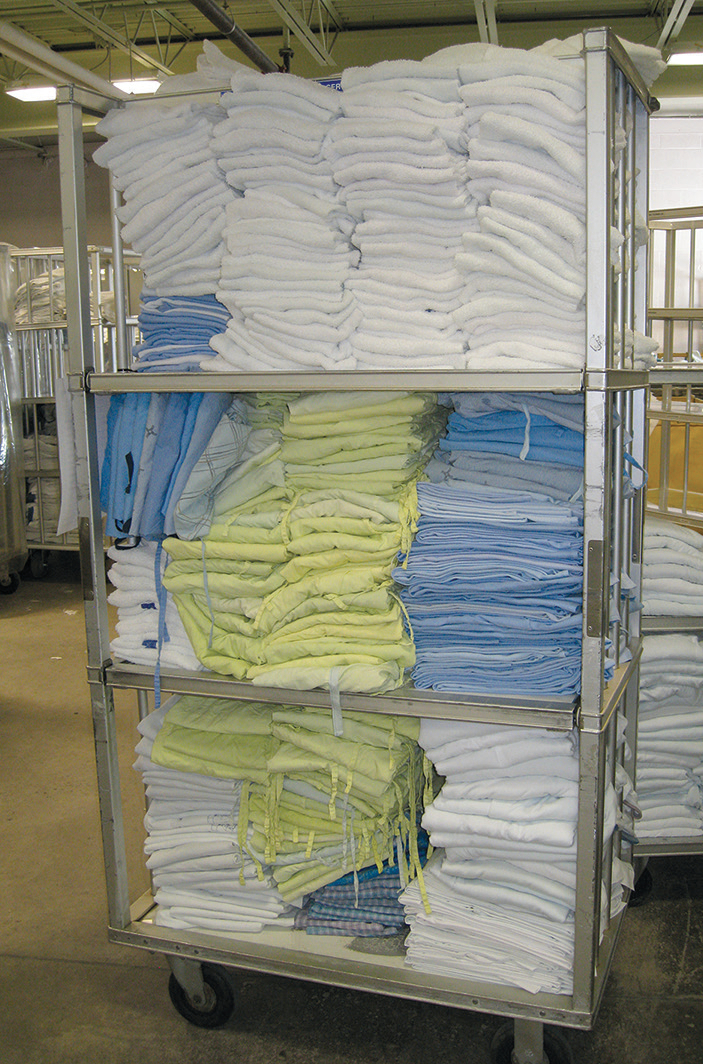

| Topic: Emptying, Filling and Moving Laundry Carts | |
| Date Issued: December 23, 2015 | Date Revised: |
Most laundry carts are either three-feet or five-feet long. They have either fixed or flip shelves. Some carts have four swivel wheels; others have swivel wheels at one end and fixed wheels at the other.
In co-operation with Facilicorp NB

A look at three-foot and five-foot carts

Flipping the shelf on a new cart

Cart full of clean laundry
December 2015